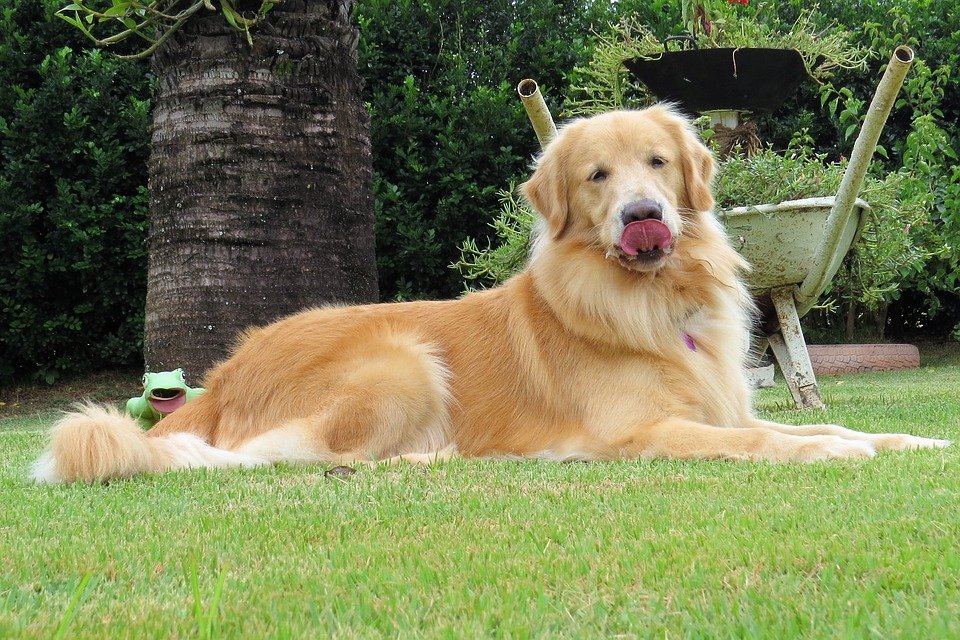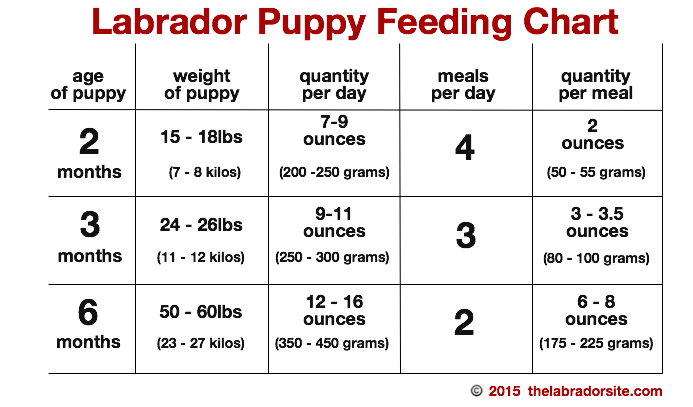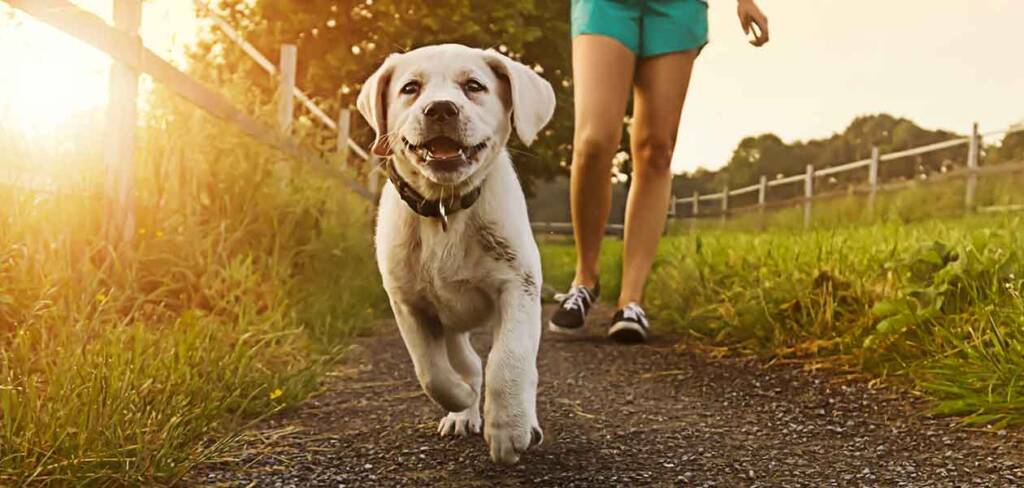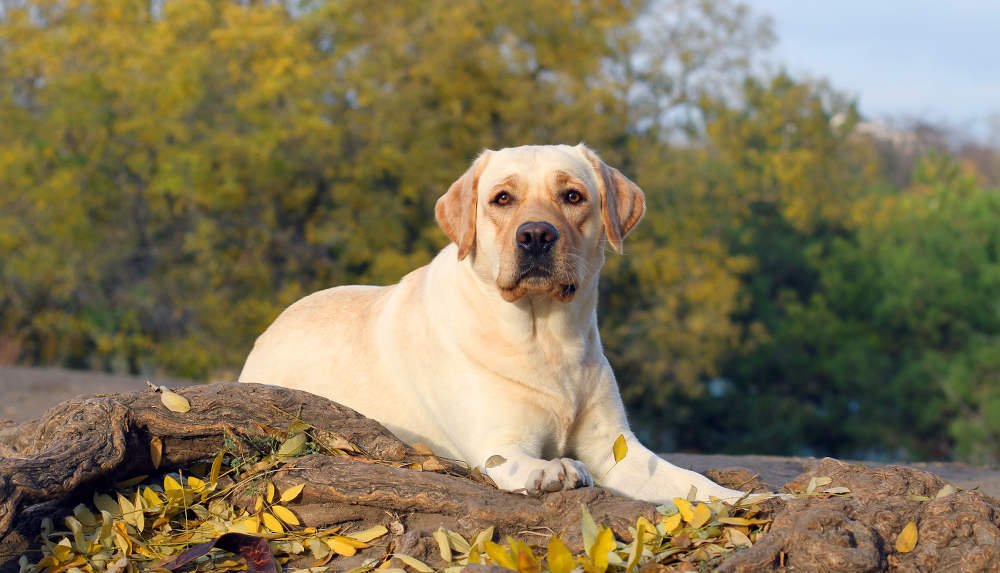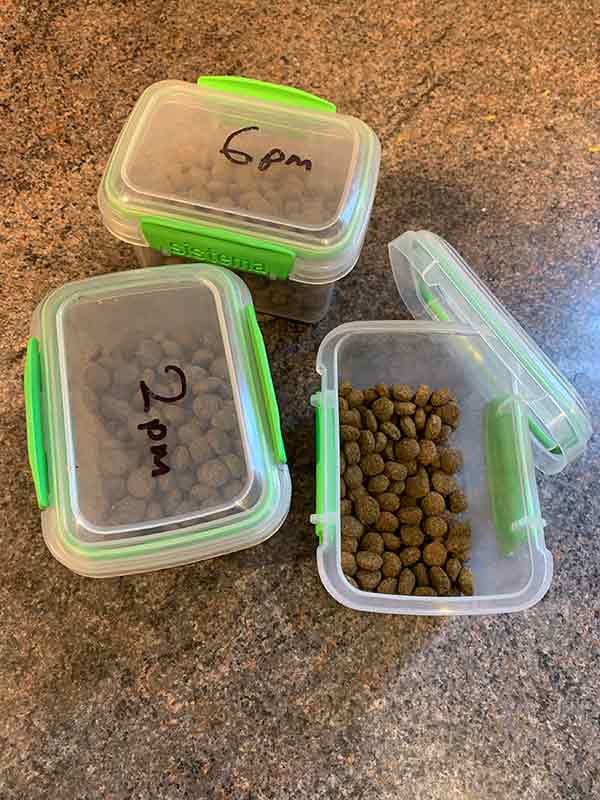Diet Charts And The Best Food For Labrador Puppy: You can find a lot of information on feeding your Labrador puppy here. We’ll cover four main methods of feeding a puppy. We can help you figure out how much to feed a Lab puppy, how often to feed them, and what food is best for them.
We are going to show you the best puppy foods, whether dry, wet, or raw, while looking at food safety, as well as schedules, quantities, and a handy puppy diet chart. Finally, we will provide you with some reviews of the various brands, and will help you cope with your transition to adult food.
How to Feed Your Labrador Puppy
Let’s get started! There’s a lot to discuss! You can use this handy contents list to jump straight to the answer if you have a specific question:
What can my puppy eat?
There are many questions on our website about how to feed your Labrador Retriever puppies. Many people wonder if it is OK to give puppies eggs, rice, milk, etc.
I remember when I was a kid, we fed puppies all kinds of things, including scraps, raw meat, canned puppy food, puppy meals, and breakfast cereal.
In modern times, you can usually feed your Labrador puppy much more easily. The majority of new puppy owners opt for a commercial puppy food that is nutritionally complete and contains everything their puppies need.
The best puppy food for labs
We all want the best for our puppies and want to feed them a nutritious, healthy, and tasty diet. Is there a puppy food that is particularly good for labs? Most people feed puppies commercially produced dry dog food, also referred to as kibble. These foods are perfectly balanced and can provide a complete diet for your puppy. After we discuss some of the dry puppy food brands, we’ll discuss some of the different brands of puppy food.
Some people mix in some commercial tinned dog meat, which is another healthy option. Look for a quality brand designed specifically for puppies.
It is also possible to feed your Labrador puppy home-cooked food or raw food. You’re probably familiar with BARF, or Biologically Appropriate Raw Food. Raw feeding puppies is becoming increasingly popular, but there are pros and cons. That will be the topic of a future article.
How to feed a Labrador puppy
Let’s take this step by step. We have the following choices:
- Kibble (dry food)
- Barf (raw food)
- Wet food (cans and pouches)
- Home-cooked puppy food
There are pros and cons to all of these.
Experts disagree about puppy feeding
Even the experts disagree on what is the best food for puppies, which poses a problem for puppy owners. It isn’t uncommon for people to believe that one way of feeding is superior to another, and there is always some evidence to support their beliefs.
The only way to keep a dog healthy is to perform BARF, say veterinarians on YouTube. In contrast, other veterinarians and nutritionists argue that kibble is the only food you should feed your puppy, warning of dire consequences if you switch to a natural diet.
It is also common for dog breeders to be divided into those who feed kibble and those who feed raw food. Take a look online – you’ll find plenty of claims that one method is superior to another.
There is indeed no good-quality evidence showing that raw feeding or kibble is better for the long-term health of your dog. It’s important to make sure your dog eats good quality food, and both have risks and benefits. We will now examine some of the pros and cons of the different puppy foods.
How To Choose The Best Puppy Feeding Method
Different methods of puppy feeding are suitable for different families. Some dogs and some families might be better suited to raw feeding, while many dogs and their families might be better suited to kibble feeding.
As long as you feed your puppy commercial dry puppy food, you should not feel that you are letting him down in any way. Now let’s talk about feeding your Labrador puppy kibble. In the United States and the United Kingdom, most modern puppies are fed dried food
Feeding your Labrador puppy kibble
Pellets of ready-made puppy food are widely available throughout the world. Kibble stores well provided that you do not allow it to become damp. It will do the job if you use an airtight plastic container or tin, although you should make sure it is food-grade.
It is believed by most breeders and vets that kibble is the best way to feed a Labrador puppy. Therefore, if you decide to give your puppy dry food, you are likely to get plenty of support from your vet.
You will find every nutrient your Labrador puppy needs to grow and stay healthy in a good puppy kibble. It will be tasty, good for your teeth, and free from additives that can cause stomach problems or allergies.
If you choose to feed your Labrador puppy dry food, what happens? What about other kinds of food?
Puppy Kibble Should Be Feed With What Else?
There is no need to provide anything else to your Labrador puppy apart from water if you are feeding it kibble. A reputable manufacturer intends to produce puppy kibble that is a complete and balanced food for puppies. Some owners like to mix in canned dog food or even scraps of raw food with kibble.
Even if you do this occasionally with an older dog, you may find that it upsets their tummies, and you may not be feeding them a balanced diet unless you include a variety of ‘extras.
Consult your veterinarian
You should always check with your veterinarian before trying it, especially if your puppy needs a special diet.
Whether you decide to feed only kibble or mix it up, choose a good dried food manufacturer and stick with them. In recent years, raw food diets have become increasingly popular.
Can puppies be fed raw food?
It is thought that feeding your Labrador puppy kibble might have long-term negative effects, so some people prefer feeding a more natural raw diet. This is how I feed most of my dogs. There are pros and cons to raw feeding which you need to consider carefully before committing.
Research a lot
It’s important to research the nutritional needs of puppies during this time of rapid growth to maintain a balanced diet. The following articles will help you decide whether or not raw feeding is for you:
- Raw feeding information
- And its pros and cons
Despite my preference for raw feeding my dogs, most puppies fed kibble live long and healthy lives. Portion control is the most important factor regardless of the food you choose. Those who eat too much food will become fat, those who eat too little will not grow and develop properly.
What Should I Feed a Labrador Puppy?
Most often, people tell me how much food they should give their puppy based on its weight. “How much should I feed my Labrador puppy?” is one of the most common questions we receive.”
You can find a puppy diet guide below to get an idea of how much you should be feeding. Many food brands provide lab puppy feeding charts.
Knowing how much to feed a Labrador puppy is sometimes a matter of watching her closely. She may look overweight if she is overfed.
Puppy Overfeeding Risks
A puppy’s rapid growth doesn’t just lead to weight gain, it also results in larger but less dense bones and associated skeletal problems. If they grow too fast, Labradors and other large breed dogs are, particularly at risk. Make sure to follow the feeding charts and guidelines, and don’t forget to book an appointment with your vet to make sure your Lab is growing normally.
The following diet chart is for kibble-fed puppies and does not apply to raw-fed pups. It gives you an idea of how much should I feed my Labrador puppy
Feeding chart for lab puppies
Please note that the Lab puppy feeding chart below is only a rough guide. You will need to adjust the amount of food you feed your puppy based on your puppy’s size and what brand of food you are feeding him.
Dietary charts are typically provided on the bag of food or the manufacturer’s website. Also, consult with a veterinarian or dog nutritionist to make sure that your puppy eats the right amount of food to grow strong and healthy.
If you’re selecting the best brand of dog food for your puppy, diet charts are useful.
How to Choose the Best Puppy Food
You can feed your puppy a good brand of dog food every week and ensure he gets all the nutrients he needs to stay healthy without having to spend a small fortune.
You should feed your puppy food specifically designed for puppies since they have different nutritional needs and their small teeth cannot handle hard large biscuits. Puppies shouldn’t be fed adult dog kibble.
When feeding your Labrador puppy, you should choose a product designed for medium/large breed puppies. Make sure to read the dietary guidelines carefully on the pack. An ideal protein supplement should have a low amount of additives and a high amount of protein.
Some of this always boils down to cost, since the healthiest foods are usually the most expensive and may be out of reach for some families.
Puppy Food Costs
Food brands with a higher proportion of essential oils, proteins, and other nutrients tend to be more concentrated. Cheaper brands may have more ‘fillers’ in the form of extra carbohydrates, usually made from grains. In the absence of these fillers, it is often possible to feed lower quantities of more expensive food, which makes it less expensive than it first appears.
You might also find that cheaper brands make your puppy poop more due to those extra fillers passing right through him. While some brands are beyond the budget of many families, buying a premium brand is usually a good idea.
Puppy Food Brands of High Quality
Several brands of puppy food have earned a reputation for producing high-quality products and have many loyal supporters, including breeders who have fed them to generations of puppies.
As a source of carbohydrates, Orijen and Nature’s Variety (and some other more expensive brands) depend on legumes like lentils and chickpeas.
Grains can cause bowel irritation in dogs, but these are much gentler on their stomachs.
Dog Food Advisor, an independent pet food review site where you can learn more about the ingredients of different brands of dog food, gives good ratings to both of these brands.
Puppy food availability
Many of the big brands are widely available throughout the world, and they have a valuable reputation to uphold. Your puppy will likely be eating a good quality product if you choose one of these.
The puppy food packet should provide you with the manufacturer’s quantity guidelines for that brand.
Some artisan brands make use of the best dog treat packaging materials with complete labels and feeding instructions.
You should not follow the advice slavishly as this is only a rough guide. Puppies overfed with food are prone to diarrhea, obesity, and rapid growth.
We will now discuss how to tell if your puppy is getting too fat or too thin.
The Puppy Feeding Quantity Guidelines
To make matters even more complicated, not every puppy in each age group will fall within the weight range outlined above. Some owners may wonder if something is wrong with their puppies. No worries, though, because our cuddly Labrador pups differ so much.
Puppies of the same age vary in size and weight, so the amount of food you need to feed them will differ. Observe and feel your puppy to see how he is doing using the guidelines on the packet. In case of concerns, you can always talk to your veterinarian.
We have looked at the type of food and the amount, so we can now look at the feeding schedule. Let’s start by talking about where your puppy should be fed.
Where To Feed Your Puppy
She will quickly become accustomed to eating with people milling around her if you feed her in a family room like a puppy. This should prevent what we call ‘Food Guarding.’
Food safety
Growling may be used by puppies to guard their food at some point. He is more likely to experience this if he is used to eating in solitude, but suddenly you expect him to eat in front of others. You don’t need to worry if your tiny friend starts protecting their food because it is an easy thing to fix if you are willing to learn a few tips and tricks.
It is not a good idea to punish your puppy, as that will only make things worse. To stop your puppy from growling over food, you will need to follow the instructions.
Feeding in crates
It is helpful to feed your Labrador puppy some meals in his crate, especially if he is not sure if he should be using the crate.
How To Choose The Right Food (And Water) Bowls
When it comes to choosing a food bowl for your puppy, you have plenty of options. If you prefer, you can simply feed your puppy from one of your plates or bowls.
My preference is for A simple bowl made of stainless steel*
. You can put them in the dishwasher, they won’t break, and they last a lifetime. It is easier to keep bowls clean and sterile since they do not scratch easily, so food cannot collect in cracks and scratches.
Having a puppy chase an empty bowl around the kitchen can be a bit noisy, however.
When it comes to aesthetics, there are plenty of prettier bowls on the market if that’s what appeals to you.
You should use a really heavy ceramic bowl for your puppy’s water since they are so difficult for him to tip up.
Size can be important, too. If you buy a bowl that is too big, then it is easy to give your puppy too much food accidentally. Too small a bowl, and you might give her too little. A right size bowl is a useful tool for keeping your puppy at the right weight.
Keeping Your Puppy At The Right Weight
Too much or too little weight must not be gained by your dog. While you have some leeway, you should increase or decrease his rations according to his growth.
Puppy obesity is the most common problem. Even though we all love cuddly Labrador puppies, they shouldn’t be rotund!
They should have a definite waist by three months or so, just like older dogs. Remember that your vet is the best person to give you advice if you are uncertain about your puppy.
In addition, puppies that are too thin are another side of the weight issue. Puppies that are too thin pose an additional problem.
Is Your Puppy Too Thin?
Taking your puppy to the vet for a checkup is a good idea if you are concerned about his growth rate. Changing brands or increasing the amount of food can sometimes provide a more nutritious option with fewer fillers.
It’s important not to double her food all of a sudden since this could upset her stomach and make matters worse.
You should get your vet to examine your puppy if you can see her ribs or if she weighs a lot less than the weights on the chart for her age.
How often should you feed your Labrador puppy?
Just like most baby animals, puppies need to be fed more frequently than older dogs. At this moment, your puppy’s growth is the fastest it’s ever been. The right nutrients, as well as lots of calories, will fuel his growth.
When you feed him his entire ration in one go, his digestive system will be overwhelmed and he will get diarrhea. Therefore, you need to make sure that your puppy’s daily food intake is divided into several small meals, separated by three to four hours.
A great way to prevent stomach upsets is to feed your Labrador puppy little and often. Consider dividing your puppy’s ration into four meals for a while if he has rather loose stools on three meals per day.
General Guidelines
As a general rule, puppies fed on kibble require
- Three months to eight weeks: four meals a day
- Between three and six months: three meals a day
- Between six and twelve months: two meals a day
All of this is part of getting your puppy used to the feeding schedule. Most puppies like predictability and eating at set times.
Puppy feeding schedules and mealtimes
Up to a certain extent, your puppy’s feeding schedule can be adjusted to fit your preferences. Do not try to cram all his meals into the evening. You will need to make sure someone comes in to feed him if you have to work during the day.
The puppy’s daily food ration can’t just be left down, because he’ll eat it all at once and this may upset his stomach.
Puppy Ad Libitum Feeding
Puppy ad-lib feeding systems allow puppies to help themselves at any time to food from a hopper.
It is believed that if food is never restricted, the puppy will regulate his food intake.
It has been shown, however, that puppies fed this way are more likely to have bone and joint problems. As a result, it is not recommended.
If you don’t choose the right time of day to feed your puppy, you won’t be able to keep him clean and dry at night. In addition to feeding schedules, how long your puppy sleeps at night can also be affected.
First Meal of the Day
Puppies love food and crave the attention that comes with feeding time. If you’re feeding your Labrador puppy at 6 am, because he has woken you and was hungry, the chances are he’ll wake you at 5:45 the following day!
Remember, feeding is a powerful reinforcer of behavior. If you don’t want to encourage your puppy to wake you up earlier each morning, don’t feed him as soon as you get up. Have a coffee and wake up before filling the bowl.
Have a set time for breakfast and don’t feed her before then, even if she has been awake for two hours. She won’t starve in that short period, although she might make you feel like she is! Be firm and resist temptation.
Last Meal Before Bed
Try to space your puppy’s meals out fairly evenly throughout the day. Most importantly, don’t feed your puppy just before you put her to bed for the night.
I like to leave at least a four-hour gap between the puppy’s last meal and her bedtime. This helps to reduce the risk that she will want to use the bathroom at 2 am.
Example Puppy Feeding Schedule
Just to help you on the way, here is an example puppy feeding schedule. Of course, you can adapt this to suit your routine as long as you pay attention to the above advice.
Feeding schedule for an 8 week old Labrador puppy
My puppy feeding times for 8-week-old puppies tend to be something like this:
- 7 am
- 11 am
- 3 pm
- 7 pm
You don’t need to be a slave to the clock, but this is just to give you an idea. A few minutes or even half an hour earlier or later won’t cause problems.
12 Weeks Old
Feeding schedule for a 12 week old Labrador puppy:
- 8 am
- 1 pm
- 6 pm
If you want to make an early start with training your puppy, you can use all or part of his daily rations during training sessions. Again, spread these out throughout the day, and don’t feed too close to bedtime
What If My Puppy Is Still Hungry?
One of the things people most often ask is, “what if my puppy is still hungry?” They have followed the guidelines on the packet, but the food doesn’t seem to be enough to satisfy the puppy.
If your puppy clears up his food in a few seconds and begs for more, don’t panic. This is perfectly common and perfectly normal.
Your puppy doesn’t know for sure when his next meal will be along, so it makes sense to him to eat as much as he possibly can right now!
And, puppies are very good at using every trick in the book to win you round.
Stand firm!
Slow Feed Dog Bowls
You can try giving your puppy her meal in a slow-feed bowl or plate. These work very well for some puppies and can help to prevent a puppy from eating its food so quickly that it makes her sick.
The large one will hold a full meal of Labrador kibble, enough for an adult.
In addition, as a bonus, your puppy will have a lot of tail-wagging fun getting the pieces of kibble out from between the blades of grass. Problem-solving can be very enriching for your puppy.
What about the opposite problem, that your puppy is refusing to eat?
What should I do if my puppy won’t eat?
Labrador dogs are not all greedy, as most experienced owners know. Puppies, in general, eat more when they are with other puppies when they are fed in a group
The first few days that a puppy spends in his or her new home are usually spent without food. A few pieces of kibble are eaten, then they refuse to eat any more. Your hand, not their bowl, will be used to feed the puppy. You should contact your veterinarian if your puppy hasn’t eaten for more than four hours. If the puppy seems listless or is showing any signs of illness, call sooner.
Apart from that, it’s probably nothing to worry about if your appetite is somewhat reduced. Mention it to your vet when you take the pup for his first checkup or in the next few days.
Should Your Puppy Have Milk?
Two out of four meals are still given to puppies by older breeders. It’s an homage to the days before we invented kibble. It is also very natural to want to give milk to a baby animal, and sometimes it even feels right to do so. Remember, however, that dogs are weaned at an earlier age than many other mammals.
When you bring your puppy home at eight weeks of age, he is fully weaned. He does not require any milk of any kind. If you feed milk to an older puppy, he will simply get diarrhea.
If you are feeding your Labrador puppy complete kibble, your puppy does not need milk to drink, and freshwater is all they require.
Now, you have followed puppy feeding advice and your dog is almost an adult. How can you change the feeding routine to help your puppy transition to the next stage of its life?
Changing From Puppy To Adult Food
Kibble manufacturers often recommend feeding your Labrador puppy kibble for puppies up to 12 months of age, before changing to adult kibble.
Some breeders and experienced dog owners switch their lab puppies on to adult food before this, but not usually before they reach six months of age.
Switching Between Dog Food Brands
If you haven’t yet brought your puppy home, make sure you get a diet sheet from the breeder, and make sure you feed her the same brand for a week or two.
When she leaves home, her little stomach will have plenty to deal with without having to learn how to digest new foods.
Adding Variety To Your Puppy’s Diet
Oftentimes, we attribute human characteristics to puppies and assume that since we would be bored eating the same thing, your little one will be too. People are encouraged to try adding scraps to the puppy’s diet or switching brands.
It might make you feel caring to add your extras, such as cereals or milk, to the kibble, but it will only throw off the balance. Puppy’s tummies can be upset by changing brands.
In other words, don’t try to fix something that isn’t broken. If your pup’s diet is balanced and tasty, why would you change it? As long as the food is the same brand, puppies probably don’t get bored from lack of variety, although it is rarely bad to change the flavor of food.
Training, hand feeding, and treats
Most of your puppy’s food allowance will be used up in training with modern training methods. Training treatments are not necessary for this. Your puppy can eat his normal food.
It is also possible to hand-feed the puppy’s other food if you wish. I do this now with my puppies, and if you are at home all day you can do the same. The process is a wonderful way to form a lasting bond with your puppy
It works like this: I measure out the puppy’s daily food allowance and divide it into portions, but instead of putting those portions into a bowl, I put them in small airtight food containers labeled with ‘mealtime’.
Following one mealtime, I open the pot for the next mealtime, and over the next few hours, I hand-feed pieces of the kibble in the pot to the puppy whenever the puppy does something I like. The pot is also used to hand-feed the puppy to visitors at my house. Here are some examples.
- When the puppy looks up at you
- Keeping all four paws on the floor while being petted by the puppy
- as the puppy rests quietly on a blanket or cushion
- A scary event occurs (e.g. someone knocking at the door)
- or something very exciting occurs (e.g. visiting children).
Furthermore, I use many of the kibble-playing puppy games – these games are designed to build a puppy’s confidence and lay the foundations for obedience training. Whenever I leave the room, I keep some of the kibbles in a pocket and give some to the puppy so that they associate me with a happy experience.
When there is still food in the pot by the time written on the lid, I tip it into my hand and let the puppy eat it in one go. Otherwise, it’s empty. You can go ahead and open the next one!
I wish you the best of luck with feeding your Labrador puppy! Do not hesitate to contact your vet if you have any concerns about him.
You can find plenty of new resources on our website if you’re interested in learning more.
Summary
You can feed a Lab dry food, wet food, or raw food, but you shouldn’t feel forced to prepare home-cooked food for your puppy if you don’t want to. Most puppy parents feed commercially prepared complete foods, and puppies thrive on good quality kibble.
As always, if you have any questions, feel free to leave us a comment and, as always, we regularly update articles with new information from our readers.
What food do Labrador puppies eat?
The majority of Labrador owners feed their puppy kibble.
Kibble is ground meal, shaped into dried biscuit-like pellets that are extremely convenient to buy, store and feed, providing everything a puppy needs in one easy to handle product.
What is the best diet for a Labrador?
Labradors can eat a range of foods that are perfectly safe and healthy. These include proteins – such as beef, lamb, pork, and chicken; grains such as wheat, oats, corn, and rice; dairy such as yogurt and cheese; and fruit and vegetables such as apples, berries, carrots, and peas.
Is pedigree good for Labrador puppies?
How many times a day should a puppy eat?
What are the best times to feed a puppy?
The best time for your puppy’s first meal is around 7 a.m., noontime for lunch, and 5 p.m. for dinner. The last meal should always be around 5 p.m. so that he will have ample time to digest his food and eliminate one last time before bedtime.
Can we give rice to Labrador?
The answer is yes. You may not even realize it, but rice is an ingredient sometimes found in commercial dog foods. In fact, if you ask many pet owners what they feed their dog when he’s sick, they’ll likely tell you that white rice is a part of their pup’s diet.
How much should Labradors eat?
For a 50-pound Lab feed 2-1/2 to 3 cups daily. For a 60-pound Lab feed 3 to 3-1/2 cups daily. For a 70-pound Lab feed 3-1/4 to 3-3/4 cups daily. For an 80-pound Lab feed 3-1/2 to 4 cups daily.
Can we give milk to Labrador?
Is cerelac good for puppies?
Do puppies poop after every meal?
Most puppies eat three to four meals a day while they’re growing and they’ll have to pee and poop after each meal. For younger dogs, wait about 20 minutes after a meal to take him outside to potty. The younger the puppy, the sooner you should take him out after a meal.


